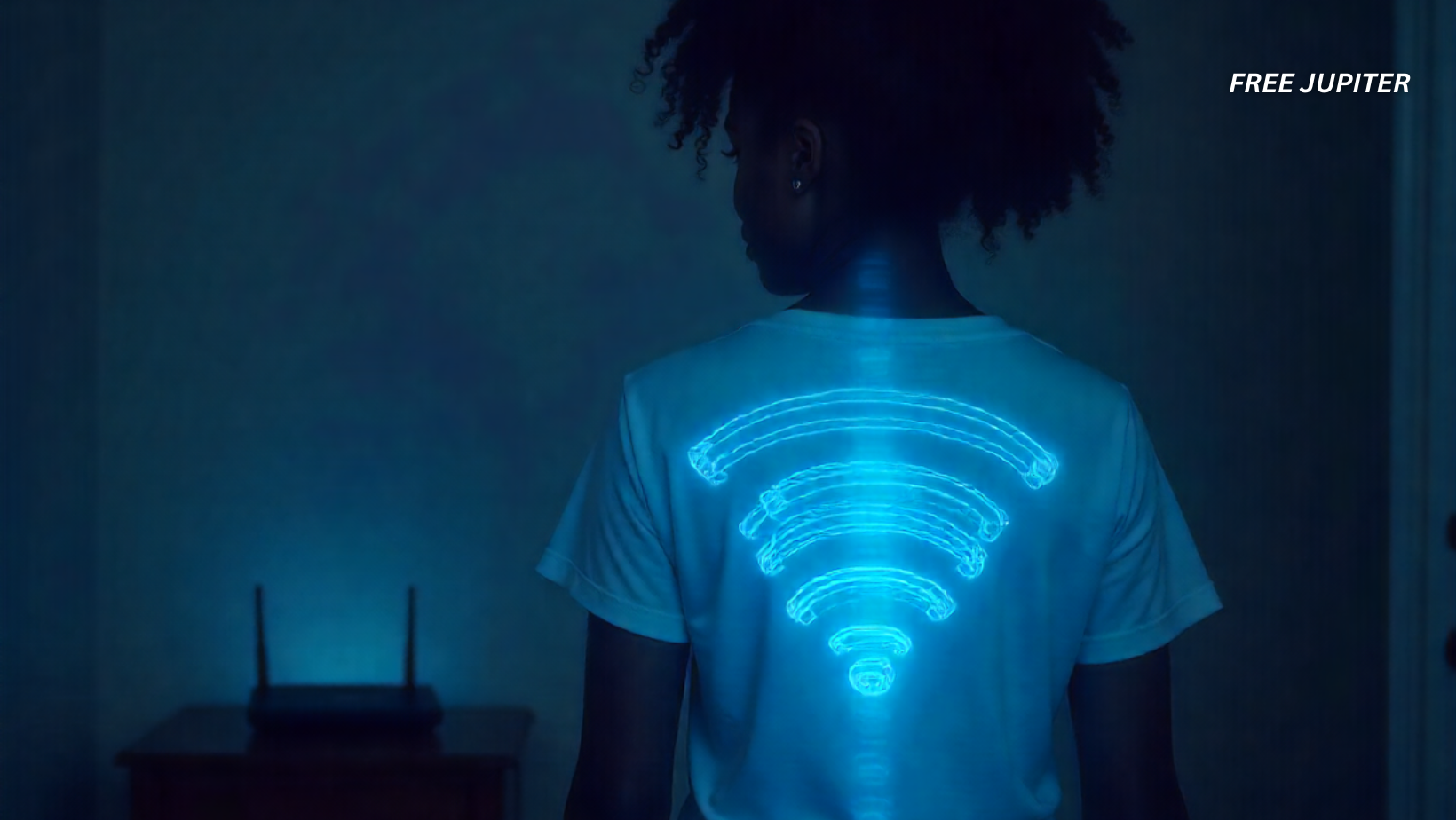Friendly Note: FreeJupiter.com shares general info for curious minds 🌟 Please fact-check all claims—and always check health matters with a professional 💙
It’s official: Wi-Fi is no longer just a background utility helping you stream videos or scroll through social media. It can now recognize who you are — even if you’re on the other side of a wall.
Researchers from La Sapienza University of Rome have developed a system called WhoFi, which uses nothing more than regular Wi-Fi signals to identify individuals with an impressive 95.5% accuracy. No cameras. No microphones. Just invisible waves bouncing off your body and quietly revealing your identity.
Let that sink in for a moment: your body now has a recognizable “Wi-Fi echo.”
How Wi-Fi Sees You Without Actually Seeing You
When you walk through a room filled with Wi-Fi signals, you’re not just passing through the air unnoticed. Your body subtly changes how those signals travel. Think of it like walking through fog — you’re not invisible, and you definitely leave a trail.
WhoFi uses that idea to its advantage. The system works by analyzing the way Wi-Fi signals scatter after bouncing off different people. Everyone reflects the signal a little differently based on things like body shape, posture, movement, and even muscle and fat distribution.
Using common TP-Link routers — the kind you’d find in any tech store — the system monitors changes in the signal. It then feeds that data into a neural network (a type of artificial intelligence designed to mimic the way our brains learn patterns). Over time, it learns to match certain signal distortions with specific people — even when they wear different clothes or walk behind a wall.
No need for facial recognition. No need for your phone to be in your pocket. Just your body and the silent language of wireless signals.=
A Step Ahead of Previous Tech
While using Wi-Fi to “see” people isn’t entirely new, earlier systems were far less accurate — topping out at about 75% accuracy, and usually limited by things like lighting, line of sight, or movement speed.
WhoFi is different. By training a neural network on real-time data from 14 participants wearing different outfits, researchers found that the system could still tell individuals apart with a reliability of 95.5%, regardless of what they were wearing or where they stood in the room.
This puts WhoFi ahead of the curve — especially when compared to more invasive technologies like facial recognition or thermal imaging, which often require expensive equipment, line of sight, and, well… your actual face.
Read more: Scientists Create Light From Complete Darkness in Groundbreaking Discovery
The Good: A World of Smart Possibilities
At first glance, this breakthrough sounds like something lifted from a futuristic spy novel. But it’s not all dystopian surveillance and Big Brother vibes. In fact, there are quite a few positive, even life-saving applications being considered.
1. Elderly Monitoring
Imagine an elderly person living alone. Instead of using cameras (which can feel invasive), a home equipped with WhoFi technology could monitor movement patterns and detect sudden falls or unusual inactivity — and alert caregivers instantly.
2. Smart Homes That Know You
As you walk into your house, your lights could automatically adjust to your preferences, your favorite playlist could start playing, and the thermostat could tweak itself — all based on who you are, recognized silently by the Wi-Fi signal in the room.
3. Security Without Touch
Forget fingerprint scanners or retinal scans. Wi-Fi-based ID systems could allow people to move through secure areas without physically interacting with any device. Your body, and how it shapes wireless signals, could serve as your passcode.
The Bad: A Slippery Slope Toward Surveillance
Of course, with any technology that tracks people — even passively — there’s always a shadow side. If WhoFi, or similar systems, became widespread, it could quietly enable constant surveillance in public or private spaces. Airports, malls, workplaces, even classrooms could theoretically identify and track individuals without their consent.
Unlike CCTV cameras, which are visible and regulated, Wi-Fi is silent and omnipresent — making it harder to detect, monitor, or even opt out of.
The potential misuse of such technology, especially in authoritarian settings, could lead to serious privacy violations. Knowing where someone goes, who they stand near, and how long they linger in a space could be used in manipulative or unethical ways if left unchecked.
Read more: New Test Claims to Predict the End of Your Life—And It’s Shockingly Simple
Related Studies: Wi-Fi’s Spooky Talent for Seeing Through Walls
WhoFi isn’t the only project exploring the curious capabilities of Wi-Fi.
MIT’s RF-Pose System (2018)
Researchers at MIT developed a system called RF-Pose, which used wireless signals to create a silhouette of a person behind walls. It could track posture and even detect breathing patterns. Though less focused on identity, it showed that wireless signals could “see” human activity in surprising detail.
University of California, Santa Barbara (2021)
Another team found that using standard Wi-Fi routers, they could detect and reconstruct 3D shapes in a room, including moving people. While it wasn’t meant for identification, it showed just how much information Wi-Fi waves can carry.
CMU’s BodyWave (2022)
Carnegie Mellon University also explored similar ideas with their BodyWave project, showing that even slight body movements picked up via Wi-Fi could help recognize and track individuals with impressive precision.
All of these studies point to one clear message: Wi-Fi isn’t just for the internet anymore.
So, Should You Be Worried?
The answer depends on how this tech is used — and more importantly, who uses it.
If carefully regulated, it could revolutionize how we interact with our homes, health systems, and public infrastructure. But without clear ethical guidelines and privacy laws, this could pave the way for a future where every step you take is silently noted — not by cameras or security guards, but by the very air around you.
This doesn’t mean you need to start wrapping your home in aluminum foil. But it does mean that conversations about digital ethics, consent, and transparency should evolve alongside these technologies. Just because Wi-Fi can recognize you doesn’t mean it always should.
Read more: Scientists Found a Bizarre Link Between Body Temperature and Depression
Final Thoughts: A Future Written in Airwaves
We’ve entered an era where the invisible is becoming incredibly revealing. Wi-Fi, something we usually associate with buffering videos and checking emails, now has the potential to understand the physical presence of people in a room — even through walls.
From life-saving applications to possible privacy invasions, WhoFi stands at the crossroads of innovation and introspection. The next steps we take — as developers, users, and citizens — will determine whether this technology becomes a trusted ally or an invisible overseer.
In the end, maybe the most important question isn’t what Wi-Fi knows about you — it’s who gets to know what it knows.










